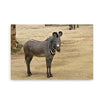History of Photography: A Journey Through Time
Introduction
Photography, the art of capturing frozen moments in time, has a rich and complex history spanning more than two centuries. From early experiments in the late 18th century to today’s advanced digital technologies, photography has radically changed the way we see and document the world. This article traces the major milestones in the evolution of photography, the technical innovations, and the key figures who have shaped the art.
The Origins of Photography
1. The Precursors of Photography
Long before the invention of photography, devices such as the camera obscura were used to project images onto surfaces. However, these images were not fixed and could not be preserved.
2. The Discovery of the Photosensitive
In the early 19th century, scientists such as Thomas Wedgwood and Sir Humphry Davy experimented with photosensitive materials, but their images could not be permanently fixed.
The First Photographs
1. Nicéphore Niépce and Heliography
In 1826, Nicéphore Niépce succeeded in creating the first permanent photograph by using a tin plate covered with bitumen of Judea, exposed for eight hours to sunlight. This technique, called heliography, is considered the first true photography.
2. Louis Daguerre and the Daguerreotype
In 1839, Louis Daguerre introduced the daguerreotype, a method that used silver-coated copper plates sensitized with iodine vapor. This technique greatly reduced exposure time and produced much more detailed images.
The Evolution of Photography
1. Photography on Paper: William Henry Fox Talbot
Alongside the daguerreotype, William Henry Fox Talbot was developing a process for photographing on paper. In 1841, he patented the calotype, which used paper negatives to produce multiple positive copies.
2. Glass Plates and Ambrotype Photography
In the 1850s, photographers began using glass plates coated with collodion to create sharper, more durable images. The ambrotype and tintype were popular variations of this technique.
3. Dry Plate and Marketing
The dry plate, invented in the 1870s, made it possible to pre-sensitize glass plates and use them later. This greatly facilitated the practice of photography and contributed to its commercialization.
Photography in the 20th Century
1. The Emergence of Color Photography
Although experiments with color photography began as early as the 1860s, the real breakthrough came with the Lumière Autochromes in 1907, which used glass plates coated with colored potato starch grains.
2. The Invention of 35mm Film
35mm film, introduced by Kodak in the 1930s, revolutionized photography by making it more accessible and portable. Cameras like the Leica popularized the format.
3. Instant Photography: Polaroid
In 1948, Edwin Land introduced the first Polaroid instant camera, which allowed the image to be viewed within minutes of being taken. This innovation changed the dynamics of recreational photography.
The Digital Age
1. The First Digital Cameras
The first prototypes of digital cameras appeared in the 1970s and 1980s. In 1991, Kodak launched the first commercial digital camera, the DCS 100.
2. Widespread Adoption
With the advent of consumer digital cameras in the 2000s, digital photography became the norm. Smartphones with high-quality cameras also democratized photography.
3. Recent Innovations
Recent innovations include computational photography, drones, and 360-degree cameras, which have further expanded the creative and technical possibilities of photography.
Key Figures in the History of Photography
1. Ansel Adams
Ansel Adams is famous for his black-and-white landscape photographs of Yosemite National Park. He also developed the Zone System, a technique for measuring exposure and developing.
2. Henri Cartier-Bresson
Considered the father of modern photojournalism, Henri Cartier-Bresson captured decisive moments with unparalleled precision, influencing generations of photographers.
3. Diane Arbus
Diane Arbus is known for her intimate and often disturbing portraits of marginalized people. Her work has expanded the perception of photography as a means of personal and social expression.
The Impact of Photography on Society
1. Historical Documentation
Photography has played a crucial role in documenting historical events, from wars to social movements, providing visual evidence and testimonies.
2. Cultural Influence
Photography has also influenced art, fashion, and advertising, becoming a universal means of communication and expression.
3. Accessibility and Democratization
With digital technologies, photography has become accessible to a wide audience, allowing everyone to document their lives and share their perspectives.
Conclusion
The history of photography is a fascinating journey through time, marked by technical innovations and iconic figures. From its humble beginnings with the camera obscura to the technological advances of the digital age, photography has continually evolved, influencing the way we see and understand the world. By exploring these milestones, we can appreciate the importance and lasting impact of this art on our culture and society.
FAQs
What is a daguerreotype? A daguerreotype is a photographic process invented by Louis Daguerre in 1839, using silver-coated copper plates sensitized with iodine vapor to produce detailed images.
Who is considered the father of photography? Nicéphore Niépce is often considered the father of photography for creating the first permanent photograph in 1826.
What is the difference between calotype and daguerreotype? The calotype, invented by William Henry Fox Talbot, uses paper negatives to produce multiple positive copies, while the daguerreotype produces a single image on a metal plate.
How has digital photography changed photography? Digital photography has made taking pictures more accessible and portable, allowing for instant processing and sharing of images.
What are Ansel Adams' contributions to photography? Ansel Adams is famous for his landscape photography and his development of the zone system, a technique for measuring exposure and developing.
How important were the Lumière Autochromes? The Lumière Autochromes, introduced in 1907, were the first commercial color photography process, using glass plates coated with colored potato starch grains.





































































Leave a comment
All comments are moderated before being published.
This site is protected by hCaptcha and the hCaptcha Privacy Policy and Terms of Service apply.